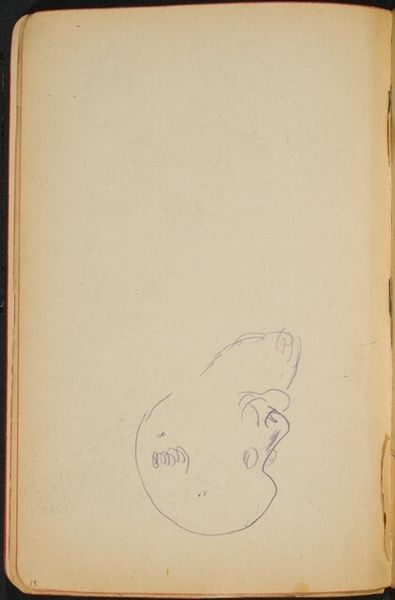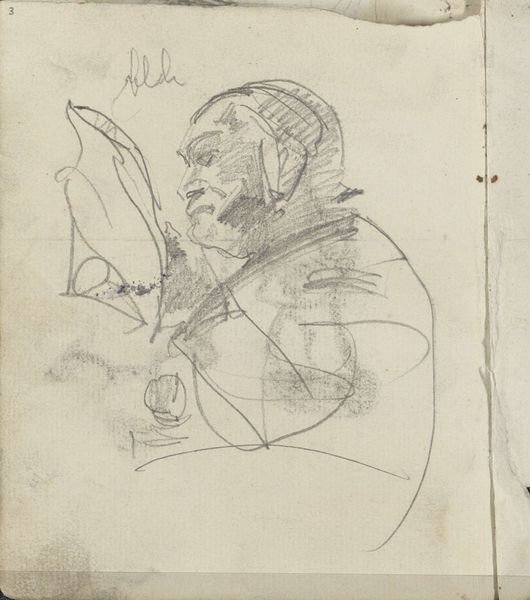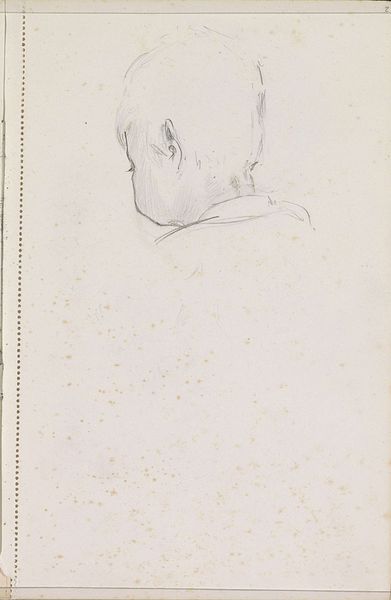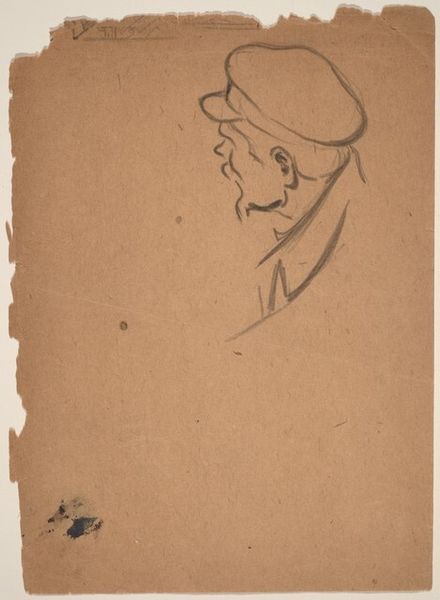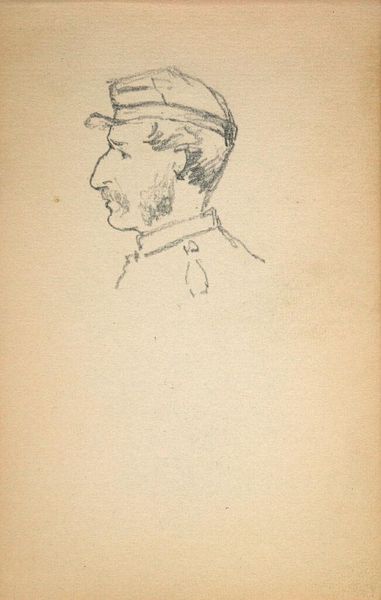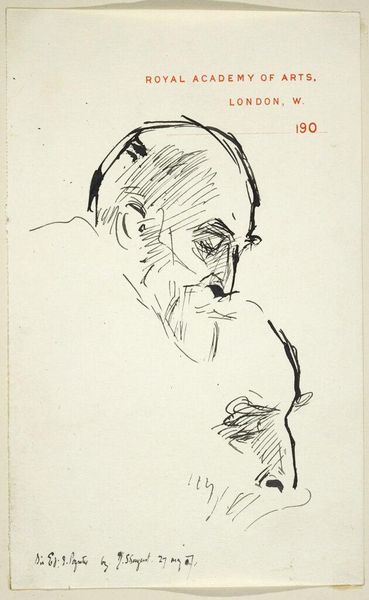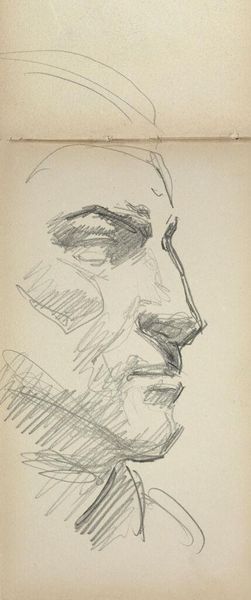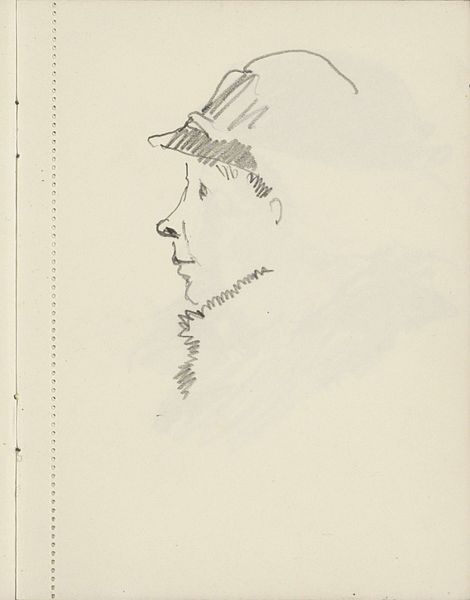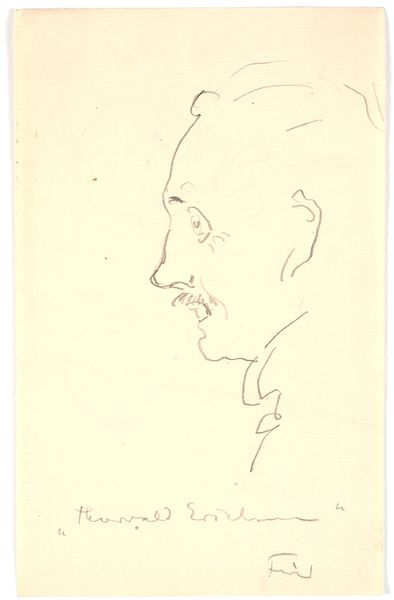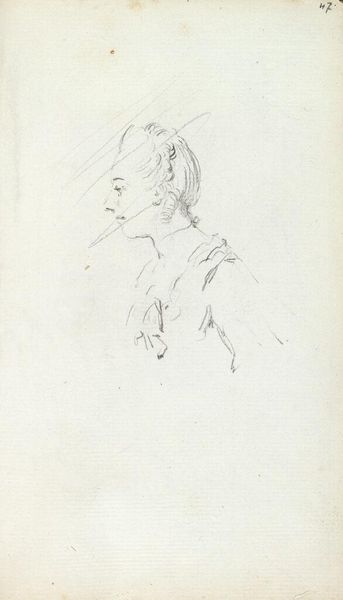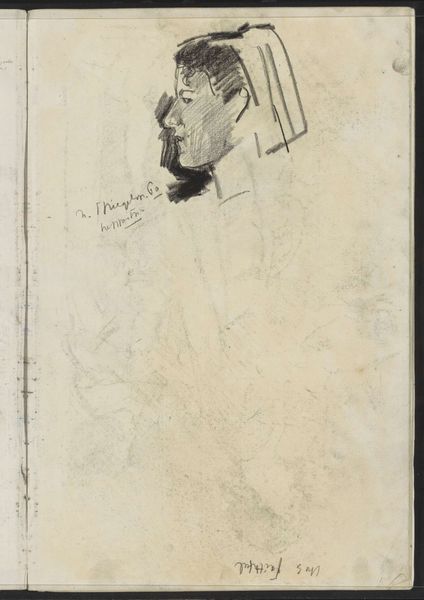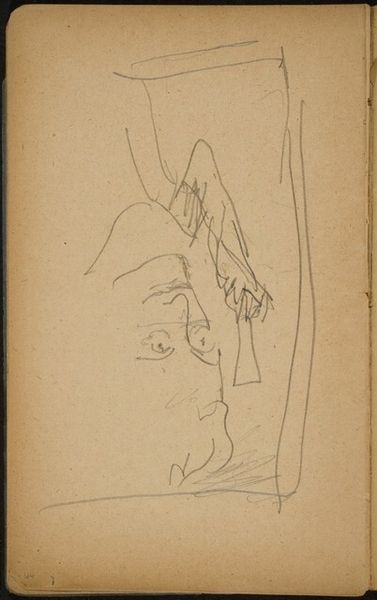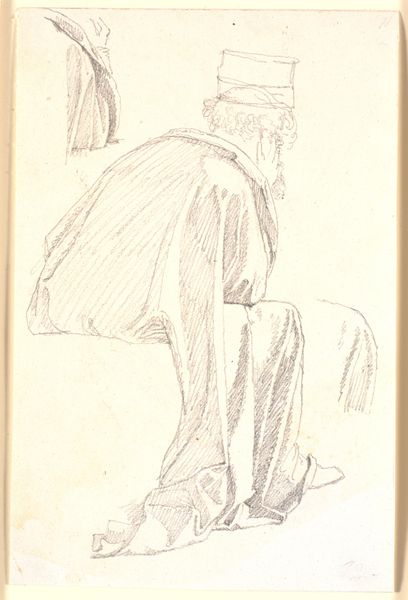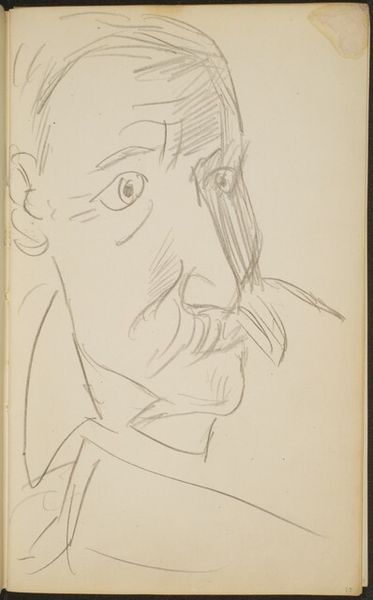![älterer Mann in Rückenansicht (Elderly Man Seen from Behind) [p. 3] by Max Beckmann](/_next/image?url=https%3A%2F%2Fd2w8kbdekdi1gv.cloudfront.net%2FeyJidWNrZXQiOiAiYXJ0ZXJhLWltYWdlcy1idWNrZXQiLCAia2V5IjogImFydHdvcmtzL2E4NDAxZWQzLTc2MGItNGEzYi05MWIyLTU1MDRmYTg3NWNkMy9hODQwMWVkMy03NjBiLTRhM2ItOTFiMi01NTA0ZmE4NzVjZDNfZnVsbC5qcGciLCAiZWRpdHMiOiB7InJlc2l6ZSI6IHsid2lkdGgiOiAxOTIwLCAiaGVpZ2h0IjogMTkyMCwgImZpdCI6ICJpbnNpZGUifX19&w=1080&q=75)
älterer Mann in Rückenansicht (Elderly Man Seen from Behind) [p. 3]
0:00
0:00
drawing, pencil
#
portrait
#
drawing
#
pencil
Dimensions: sheet: 19 x 12.5 cm (7 1/2 x 4 15/16 in.)
Copyright: National Gallery of Art: CC0 1.0
Editor: Here we have a pencil drawing titled "Elderly Man Seen from Behind" attributed to Max Beckmann, though undated. There’s a quiet simplicity to it; you almost feel like you’re intruding on a private moment. What strikes you about this piece? Curator: It's tempting to view such a simple sketch through a lens of the artist's broader context. Beckmann lived through immense socio-political upheaval – World War I, the rise of Nazism. This work, like many from that period, participates in the changing visual culture that reflected increasing alienation. Do you see any signs of that detachment in the work? Editor: I do notice how the man is turned away from the viewer. It feels deliberate. Is there a historical convention about depicting someone from the back, as opposed to the face? Curator: Yes, and its use is very potent here. Depicting the subject from behind often symbolized anonymity or a loss of identity, themes resonant in post-war European society. Consider the rise of industrialization. Did it free people, or further isolate them from their neighbors? The "Elderly Man" might serve as a commentary on those concerns, which were debated and expressed in galleries and even everyday conversations. Editor: That gives me a new perspective on it! It seemed straightforward at first, but now I see layers of meaning related to that specific historical context. Thank you. Curator: It is interesting how much socio-historical context changes the way one might view a seemingly unassuming drawing. It serves as a great reminder that we never see a piece of art within a vacuum.
Comments
No comments
Be the first to comment and join the conversation on the ultimate creative platform.
